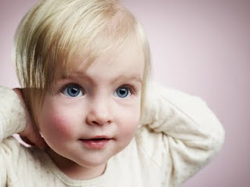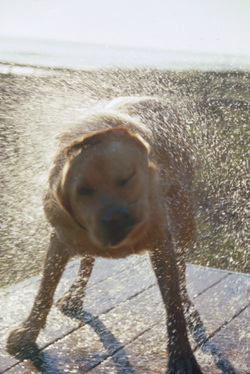
Both Charles Darwin and Konrad Lorenz, the pioneering ethologist, wrote about the appeal of baby faces as a possible adaptive mechanism. They surmised that babies' perceived cuteness could be nature's way of ensuring the little terrors get looked after. Now a team led by Morten Kringelbach and Christine Parsons has shown that men are as motivated by baby faces as women. Kringelbach is the same researcher who a few years ago showed that looking at baby faces, as opposed to adult faces, is associated with a distinct pattern of brain activity in the orbitofrontal cortex - a kind of neural "cuteness response".
For the new study, 31 men and 37 women (average age 20 years), all with limited experience of babies, looked at photographs of the faces of 70 babies (aged 3 to 12 months), each shown for five seconds, and rated their attractiveness. These results conformed to cultural stereotypes about gender differences, with the women tending to rate the babies as more attractive than the men (no such gender difference emerged for the rating of adult faces). A desire to conform to gender roles could have played a role here. However, both men and women rated as more attractive those baby faces that most closely conformed to the cute ideal: a large rounded forehead, large low-set eyes, a short and narrow nose and a small chin.
In another part of the experiment, performed either before or after the attractiveness ratings, the participants were able to press a button repeatedly to control how long each baby face remained on the screen. This was taken as a measure of how much the participants were motivated to look at the faces. In this case the men scored just the same as the women. Moreover, for both men and women it was those faces that most closely conformed to the cute ideal that they made the effort to look at for longer.
"Our findings indicate that both men and women appraise what is colloquially described as a 'cute' unfamiliar infant positively, and they will work to see that infant for longer than an infant with less 'cute' features," the researchers said. "This is in line with previous studies showing that 'cuter' infants are rated as more friendly, cheerful, and likeable and are rated as more 'adoptable'."
_________________________________
Parsons, C., Young, K., Kumari, N., Stein, A., and Kringelbach, M. (2011). The Motivational Salience of Infant Faces Is Similar for Men and Women. PLoS ONE, 6 (5) DOI: 10.1371/journal.pone.0020632
For the new study, 31 men and 37 women (average age 20 years), all with limited experience of babies, looked at photographs of the faces of 70 babies (aged 3 to 12 months), each shown for five seconds, and rated their attractiveness. These results conformed to cultural stereotypes about gender differences, with the women tending to rate the babies as more attractive than the men (no such gender difference emerged for the rating of adult faces). A desire to conform to gender roles could have played a role here. However, both men and women rated as more attractive those baby faces that most closely conformed to the cute ideal: a large rounded forehead, large low-set eyes, a short and narrow nose and a small chin.
In another part of the experiment, performed either before or after the attractiveness ratings, the participants were able to press a button repeatedly to control how long each baby face remained on the screen. This was taken as a measure of how much the participants were motivated to look at the faces. In this case the men scored just the same as the women. Moreover, for both men and women it was those faces that most closely conformed to the cute ideal that they made the effort to look at for longer.
"Our findings indicate that both men and women appraise what is colloquially described as a 'cute' unfamiliar infant positively, and they will work to see that infant for longer than an infant with less 'cute' features," the researchers said. "This is in line with previous studies showing that 'cuter' infants are rated as more friendly, cheerful, and likeable and are rated as more 'adoptable'."
_________________________________
Parsons, C., Young, K., Kumari, N., Stein, A., and Kringelbach, M. (2011). The Motivational Salience of Infant Faces Is Similar for Men and Women. PLoS ONE, 6 (5) DOI: 10.1371/journal.pone.0020632

 RSS Feed
RSS Feed